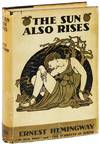![Ex[emplu]m ex libro seu catastico gastaldi[a]e ordeacij](https://d3525k1ryd2155.cloudfront.net/h/643/770/1594770643.0.m.jpg)
Ex[emplu]m ex libro seu catastico gastaldi[a]e ordeacij
by Oriago (Venice). Land property and rights
- Used
- Condition
- See description
- Seller
-
Narberth, Pennsylvania, United States
Payment Methods Accepted
About This Item
Certified transcription of Latin and Italian cadastral documents, notarial acts, privileges, decrees, court judgments and official communications issued by the Paduan and Venetian governments concerning the tax immunity of private Venetian landowners in the district of Oriago (on the Brenta between Venice and Padua).
In 1405, Venice forcibly annexed Padua and its territories including Oriago, then governed by the Da Carrara. Their lands, and those of their allies, were swiftly confiscated by the Venetian government and sold for cash to noble citizens to be owned, cultivated and developed tax-free in perpetuity. This generated immediate income for the Venetian state and initiated a shift to terra firma investment in the private Venetian economy, previously dominated by overseas trade.
Over the following hundred twenty years, new and old administrative structures, conflicting judicial rulings and executive and legislative action created a welter of jurisdictional, financial, territorial, and social disputes - in some cases violent.
To secure his own rights, the Venetian aristocrat Niccolò Maria Corbelli commissioned notary Alvise Schinelli (fl. 1523-50) to identify and certify all relevant documentary evidence of the tax-exempt status of privately owned estates in Oriago - fortified buildings, houses, hospitals, churches, farms, mills, fields, lawns, woodlands, orchards, marshes, and fishing reservoirs. This produced copies of forty documents and cadastral records in Latin and Italian, which Schinelli arranged chronologically then personally signed and subscribed between October and December 1525, as did two other notaries. The attested data confirmed the privilege of all the Corbelli properties in Oriago. Two additions to the original text, penned in 1636 and 1709, corroborate the continued tax immunity of those Corbelli holdings that passed to the extensive Moro family.
In good condition (one medial blank leaf excised), docketing note of 23 January 1710 on the first recto, modern pencil ownership note of Luschin.
¶Knapton, "Land and Economic Policy in Later Fifteenth-Century Padua" in Venice and the Veneto during the Renaissance: The Legacy of Benjamin Kohl edd. Knapton et al. (2014) 197-257; Pedani, "Villa Moro a Oriago di Mira" in Rive: uomini, arte, natura 9 (2013) 35-41; see Knapton's "I rapporti fiscali tra Venezia e la Terraferma: il caso padovano nel secondo '400" in Archivio Veneto Serie V CXVII (1981) 5-65.
¶For the attribution to the Agnese Binder: see Nuvoloni's "Commissioni Dogali. Venetian Bookbindings in the British Library" in For the Love of the Binding. Studies...Presented to Mirjam Foot ed. Pearson (2000) 85, 91 & figg. 1 & 10-11 & tools no. 9, 30, 43, 64 & 67A and Hobson's Renaissance Book Collecting figg. 81-2.
Reviews
(Log in or Create an Account first!)
Details
- Seller
- Bruce McKittrick Rare Books
(US)
- Seller's Inventory #
- 11679
- Title
- Ex[emplu]m ex libro seu catastico gastaldi[a]e ordeacij
- Author
- Oriago (Venice). Land property and rights
- Format/Binding
- CONTEMPORARY VENETIAN BLIND-RULED AND GILT RED MOROCCO BY THE ATELIER OF THE AGNESE BINDER (some wear and minor stains), gilt fr
- Book Condition
- Used
- Quantity Available
- 1
- Publisher
- Alvise Schinelli 20 October-12 December
- Place of Publication
- [Venice
- Date Published
- 1525
Terms of Sale
Bruce McKittrick Rare Books
All books are sent on approval and may be returned for any reason within ten days.
We ask that customers not known to us supply trade references or remit pro forma. We accept checks and wire transfers as well as Visa and MasterCard. All books offered are subject to prior sale.
Postage and insurance are gratis. For domestic orders we use UPS. International orders are shipped by USPS Registered Air Mail or Federal Express, unless otherwise instructed.
About the Seller
Bruce McKittrick Rare Books
About Bruce McKittrick Rare Books
Glossary
Some terminology that may be used in this description includes:
- Morocco
- Morocco is a style of leather book binding that is usually made with goatskin, as it is durable and easy to dye. (see also...
- Edges
- The collective of the top, fore and bottom edges of the text block of the book, being that part of the edges of the pages of a...
- Spine
- The outer portion of a book which covers the actual binding. The spine usually faces outward when a book is placed on a shelf....
- New
- A new book is a book previously not circulated to a buyer. Although a new book is typically free of any faults or defects, "new"...
- Recto
- The page on the right side of a book, with the term Verso used to describe the page on the left side.
- Gilt
- The decorative application of gold or gold coloring to a portion of a book on the spine, edges of the text block, or an inlay in...
- Leaves
- Very generally, "leaves" refers to the pages of a book, as in the common phrase, "loose-leaf pages." A leaf is a single sheet...
![Ex[emplu]m ex libro seu catastico gastaldi[a]e ordeacij](https://d3525k1ryd2155.cloudfront.net/h/643/770/1594770643.0.s.jpg)
![Ex[emplu]m ex libro seu catastico gastaldi[a]e ordeacij](https://d3525k1ryd2155.cloudfront.net/h/643/770/1594770643.1.s.jpg)

